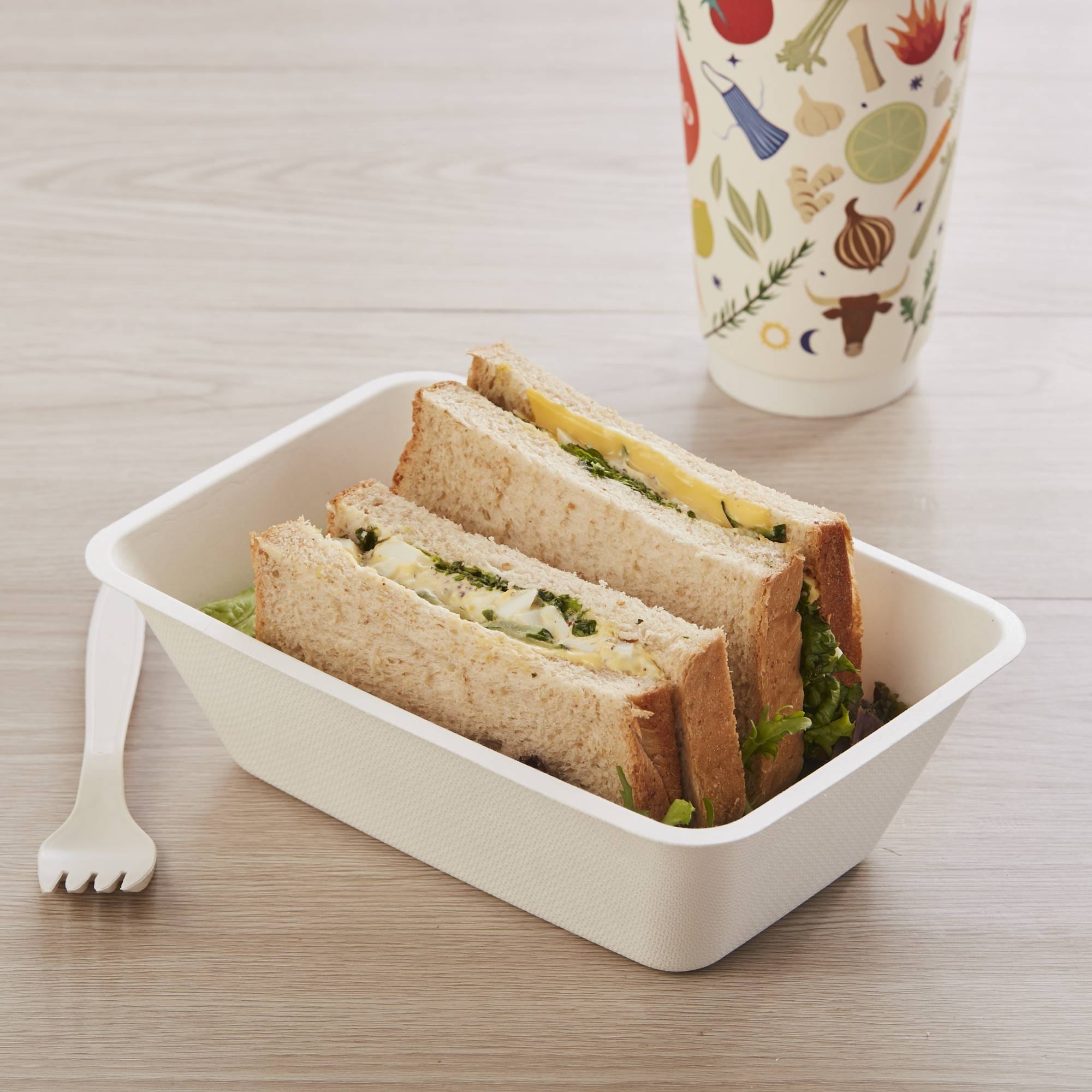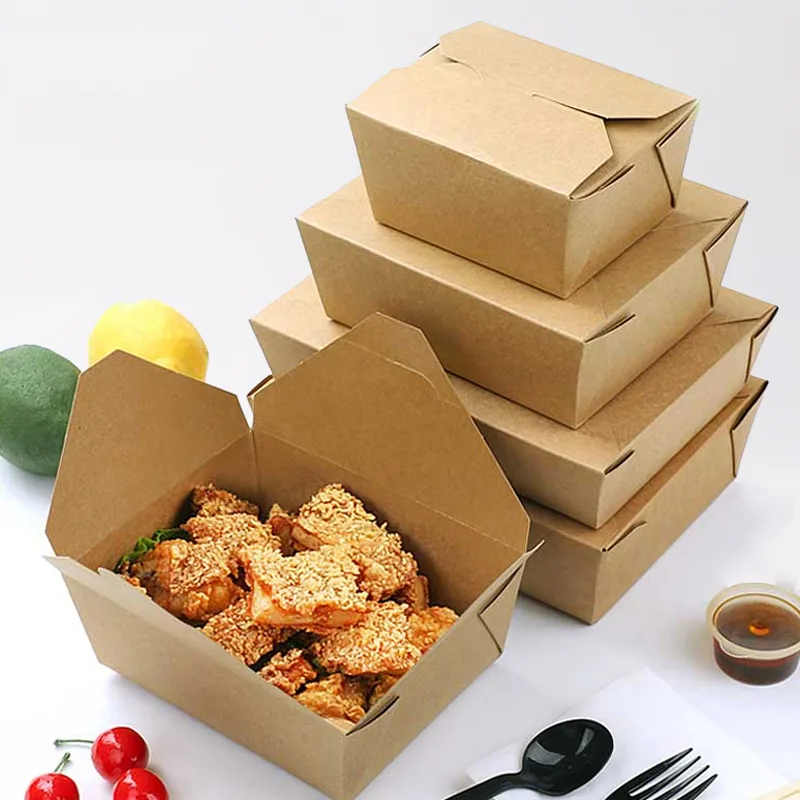In a world grappling with plastic pollution, changing climate conditions, and growing consumer awareness, the way we package our food has never mattered more. With the global takeaway food market expected to exceed $120 billion by 2027, the environmental burden from packaging—especially single-use plastics—cannot be ignored. Fortunately, sustainable materials like sugarcane bagasse, cornstarch bioplastics, and kraft paper are leading a quiet but powerful revolution.
These aren't just trendy alternatives. They're scientifically backed, commercially scalable, and highly adaptable materials transforming how restaurants, delivery services, and consumers approach food packaging. Let's explore how these materials are redefining takeaway food containers, and why businesses that act now stand to gain economically, reputationally, and environmentally.
1. Sugarcane Bagasse: From Agricultural Waste to Premium Packaging
What is Bagasse?
Bagasse is the fibrous byproduct left after extracting juice from sugarcane. Historically burned or dumped, this waste material is now being converted into sturdy, plant-based takeaway food containers.
Why It's Revolutionary
-
Naturally Compostable: Decomposes within 60–90 days under composting conditions.
-
Heat Resistant: Can withstand temperatures up to 200°C, making it microwave- and oven-safe.
-
Grease & Water Resistant: Excellent for oily foods like curries, stir-fries, and burgers.
Environmental Impact
A comparative lifecycle assessment reveals that bagasse clamshells emit 79% less carbon dioxide than polystyrene containers. And because bagasse utilizes agricultural waste, it requires no additional land, water, or fertilizers for production.
Business Adoption Example
Bioleader's line of sugarcane bagasse containers has been deployed in over 1,000 restaurants globally. These businesses not only meet compostability regulations in the EU and U.S., but also report improved consumer perception and loyalty.

2. Cornstarch-Based Bioplastics: The Smart Substitute for Conventional Plastic
What is Cornstarch Bioplastic?
Derived from the starches of corn and other renewable crops, PLA (polylactic acid) and other cornstarch polymers are leading biodegradable plastic alternatives.
Key Benefits
-
BPA-Free and Non-Toxic: Safe for direct food contact, even under heat.
-
Visually Similar to Plastic: Transparent, glossy, and ideal for salads, cold dishes, and lids.
-
Industrial Compostability: Decomposes in 3–6 months under commercial composting conditions.
Scientific Validation
A 2022 meta-analysis in Environmental Materials found that PLA products degrade up to 90% in less than 180 days in properly managed composting environments—making them highly viable replacements in closed-loop packaging systems.
Use Case: Retail + Delivery
A U.S.-based poke bowl chain introduced PLA lids and cutlery in 2023 and saw:
-
18% reduction in packaging complaints
-
25% boost in their Net Promoter Score (NPS)
-
Lower costs over 12 months due to fewer returns and better customer retention

3. Kraft Paper: Minimal Waste Meets Maximum Impact
What is Kraft Paper?
Produced through a chemical pulping process that preserves the long fibers of wood pulp, kraft paper is stronger than standard paper and has high resistance to tearing and grease.
Why It's Ideal for Takeaway
-
Recyclable and Compostable: Accepted in curbside recycling programs.
-
Customizable & Affordable: Easy to brand and suitable for printing logos or QR codes.
-
Hybrid Compatibility: Works well when combined with cornstarch lids or biodegradable windows.
Real-World Example
A bakery chain in Australia shifted to kraft-based lunch boxes and wraps. The switch led to:
-
20% drop in packaging costs over 9 months
-
40% reduction in single-use plastic consumption
-
Positive brand mentions across social media platforms
Kraft packaging's natural look also appeals to the aesthetic preferences of younger, eco-aware consumers.

Why Traditional Plastic No Longer Makes Business Sense
While plastic containers still dominate for cost reasons, they come with hidden environmental and health costs:
-
Long degradation time: Over 500 years in landfills
-
Toxic chemicals: BPA and phthalates linked to endocrine disruption and cancer
-
Legislative risk: Increasing bans, fines, and restrictions in over 60 countries
Sustainable materials are no longer “premium add-ons.” They're becoming industry standards.
What the Research and Regulations Say
Key Stats:
-
72% of consumers say they would choose a product with sustainable packaging over one without (Nielsen IQ, 2022)
-
More than 40 countries now ban or tax plastic food containers
-
EU regulations require single-use food packaging to be recyclable or compostable by 2030
Expert View:
“Packaging is one of the most immediate and visible ways for brands to showcase sustainability. It's no longer optional—it's an expectation,” says Mark Felix, Packaging Innovation Analyst at the Global Foodservice Institute.
Blended Solutions: The Hybrid Advantage
Many businesses are now combining these materials for function and aesthetics:
-
Bagasse base + cornstarch lid: Sturdy, compostable, and heat-resistant
-
Kraft tray + PLA window: Eco-look with transparent appeal for deli and bakery items
Such hybrid packaging not only meets functional needs but also strengthens brand storytelling around sustainability.
Case Studies Recap: How Businesses Benefit
1. Bioleader's Global Deployment
Deployed compostable bagasse containers to over 1,000 foodservice clients across Asia and Europe, helping them:
-
Meet regional legislation
-
Cut landfill waste
-
Improve customer satisfaction ratings by 22%
2. GreenNosh Café (Canada)
Replaced all plastic cutlery and boxes with cornstarch and kraft options.
-
Saved $6,000/year on waste management
-
Received local “Green Business of the Year” award
3. DeliveryHero (Germany)
Launched pilot with PLA-based transparent containers; observed:
-
30% uptick in environmentally tagged orders
-
17% longer average customer retention time
Conclusion: The Packaging Revolution Is Here
Eco-conscious takeaway food containers are more than a trend—they're a business imperative. Sugarcane bagasse, cornstarch bioplastics, and kraft paper are practical, proven, and profit-aligned solutions for restaurants and food brands aiming to thrive in a sustainability-driven market.
By choosing these materials, you're not just packaging food—you're packaging purpose.






